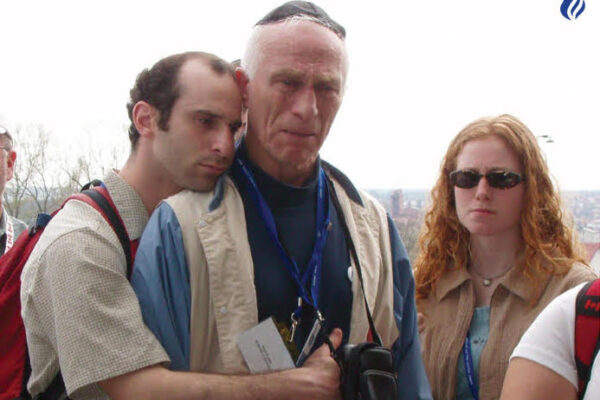
More than any other athlete of his era, Jesse Owens’s image on film has determined his fate.
It all began with those few seconds of the 100-meter dash that Leni Riefenstahl enshrined in her film “Olympia, Part 1”: the close-up on Owens’s face, the white flare of the starting gun, Owens’s lurch, and then his upright run past his competitors in 10.3 seconds, and the ever-so-close tight shot of a perturbed Hitler.
Commissioned by the Propaganda Ministry to film the 1936 Berlin games, Riefenstahl was set to showcase the triumph of German athletes as proof of Aryan physical and intellectual superiority over the rest of the world. But Owens, who earned gold in the 100-meter dash, the 200-meter dash, the long jump and the 4-by-100-meter relay, became the true star of Riefenstahl’s film.
“She did a great job of capturing the essential qualities of his athleticism: speed and grace,” Mark Dyreson, who wrote extensively about Owens in his book “Crafting Patriotism: America at the Olympic Games,” said in an interview. “Thereafter, people might have beaten his records, but when you think about the world’s fastest human, the image of Jesse Owens from ‘Olympia’ comes to mind. There, he became the iconic sprinter in the most beautiful way.”
Since then, however, Owens’s icon has endured several trials of its own. Depending on which footage you watch (and of course, in which era), he has been either race hero or race traitor; an American patriot or tax evader; evidence to legitimize racist stereotypes or, as depicted in the new biopic, “Race,” starring Stephan James (“Selma”), progenitor of the highest standard that an African-American athlete, artist or even president can achieve today — black excellence.
By the end of the Berlin Olympics, Owens had become the ultimate symbol undermining Hitler’s myth of Aryan supremacy. Seeking to reap the rewards of his heroism, Owens opted to try his luck in Hollywood rather than participate in a post-Olympic tour of Europe that the Amateur Athletic Union had arranged. But, unlike the swimmer Johnny Weissmuller, who medaled at the 1924 and 1928 Olympics and became famous for the Tarzan movies, Owens’s job prospects were doubly limited.
“He did make a little bit of money on the vaudeville circuit,” Mr. Dyreson said, “but there were no spots for that type of black leading man, like there were for Weissmuller, in the American imagination in the 1930s.”
And, because of Owens’s fallout with the athletic union, he was stripped of his amateur status. Limited by segregation and his set of skills, Owens also courted new controversies.
“He had a family to come home to, and he did everything he could do to support them,” said Owens’s granddaughter Gina Hemphill-Strachan. “I think that some of things that he did back then, like working at gas stations and running against racehorses, unfortunately were the only types of things available to him because of the era.”
Indeed, said Kenneth Shropshire, a Wharton professor whose specialties include race, sports law and leadership, “no athlete was called an ‘Uncle Tom’ more than Jesse Owens.” This stereotype was heightened when Owens, at the behest of Avery Brundage, president of the United States Olympic Committee in ’36 and president of International Olympic Committee in ’68, tried to discourage black athletes from protesting American racism at the Mexico City Games. Ignoring Owens’s request, the sprinters John Carlos and Tommie Smith went on to create an Olympic iconography of their own at the medal ceremony: wearing black socks and gloves, they raised their fists in the black power salute.
“But, we will never understand the full story and the price that people like him, Joe Louis and Jackie Robinson, those of the ‘greatest generation’ paid for their little and big moments of integration,” Mr. Shropshire concluded.
This is precisely the story that the 1984 mini-series “The Jesse Owens Story” tried to tell. Starting off with a confrontation between a much older Jesse Owens (Dorian Harewood) and a younger African-American lawyer (Georg Stanford Brown) who accuses Owens of being a race traitor, the film goes on to flesh out Owens’s long biography: his Alabama birth, then adolescence in de facto segregation in Cleveland, his meteoric rise at Ohio State and Berlin, and his staging, successful or not, of a series of post-Olympics comebacks. A romantic and fully rehabilitated image of Owens emerged from this film, just in time for the Los Angeles Olympics, where Carl Lewis publicly acknowledged his debt to Owens as he sought to win his own medals.
But documentaries like Bud Greenspan’s earlier “Jesse Owens Returns to Berlin” (filmed in 1964) and Laurens Grant’s “Jesse Owens” (2012) for PBS’s “American Experience” series have been the primary lens through which most Americans could learn about Owens. As a biopic, “Race,” directed by Stephen Hopkins and released in time for the 80th anniversary of the Berlin Games, has the potential for far greater reach, and therefore impact in our collective understanding of Owens for generations to come.
In addition to its portrayal of the complex geopolitics of those games, the movie fixes a spotlight on Owens’s athletic discipline — his grit, grace, genius — as he pursues Olympic glory. Through its focused depiction on his triumph (in the face of second-class citizenship at home), the film offers us yet another Owens, one who pursued black excellence as a powerful counterpunch to Hitler’s racist logic.
“There is a belief among some African-Americans that to defeat racism, they have to work harder, be smarter, be better,” the poet Claudia Rankine wrote in her profile of Serena Williams for The New York Times Magazine in August. “Only after they give 150 percent will white Americans recognize black excellence for what it is.”
Ms. Rankine added, “But of course, once recognized, black excellence is then supposed to perform with good manners and forgiveness in the face of any racist slights or attacks.”
Black excellence as a status and strategy is double-edged. To challenge the racism of white segregationists and Aryan supremacists, Owens, and his fellow African-American athletes, including Ralph Metcalfe and Mack Robinson, had to dominate every event they entered. By winning, Owens ultimately proved that his participation in the Olympics contributed more to the cause of racial equality than had he boycotted the games, as the N.A.A.C.P. had proposed.
But with the tight focus on Owens’s Berlin years in “Race,” “you never really get a sense of how fleeting it all was,” Mr. Shropshire noted.
That the Holocaust and World War II were right on the horizon, while Jim Crow legally reigned for almost 30 more years after Owens’s Olympic victories, proves that one man or one moving image could not stop the tide of history.
Originally published HERE.







